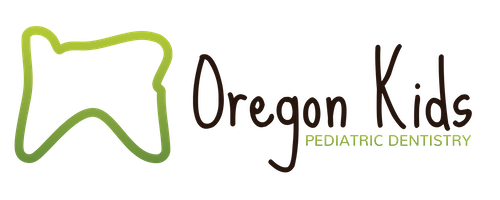Post Op Care
Fillings
- Dr. Lentfer only places fillings that are immediately stable enough to eat on. The only restriction with a filling is if your child had local anesthetic. If they are numb, Dr. Lentfer recommends only soft foods until the numbing is completely gone which usually takes two to two and a half hours.
Crowns
- Crown placement can often irritate the gums around where it was placed. You may see inflammation and your child may complain of pain and bleeding when brushing for a few days, or a week or so, after placement. Though it’s hard, you need to keep the tissues around the crown very clean in order to heal. If the crown appears “milky white,” there is too much plaque accumulation which will delay healing. In addition, crowns that have white facing on them can take longer to heal as they are bulkier and cause greater pressure on the tissues.
Extraction
- If your child had a tooth extracted, it is recommended they eat a soft diet for 5-7 days. Keep the tissues clean with regular brushing and a warm salt water rinse as your child tolerates it. Children do not get dry sockets from primary tooth extractions, but it is recommended to avoid use of a straw for a day or two to aid proper healing. Give your child ibuprofen or Tylenol as indicated for pain.
Space Maintainers
- It is important to monitor the fit on a space maintainer. If your child reports it as feeling loose, please feel the space maintainer and if it is loose, you can either pull it off if it is easily dislodged, or, push it back onto your child’s tooth. In either situation, please contact the office so we can re-cement the space maintainer as indicated. Avoid sticky candy and foods and keep the space maintainer clean with regular brushing.
Full Mouth Rehabilitation
- Full mouth dental rehabilitation is completed under general anesthesia. Your child will be sore from such extensive dental work for anywhere from a few hours to a few days to a week. Each child responds to this treatment differently. It is recommended your child stay on a soft diet for a day or two until they can tolerate regular foods. If your child reports discomfort, Ibuprofen and/or Tylenol is recommended as needed for pain. A warm salt water rinse as your child tolerates will aid in healing as well.
- The most important thing to do after this procedure is KEEP THE TEETH CLEAN! Your child will likely say their teeth hurt and their gums will likely bleed after brushing for a few days or possibly longer, but the only way to help them heal is to keep them clean. If the teeth are not kept clean, the tissues will not heal, and your child’s discomfort with brushing will continue to get worse.
Silver Diamine Fluoride
- After application of silver diamine fluoride, it is recommended you not allow your child to eat or drink for one hour. You will see the cavity where this material was applied get darker throughout the day, this is normal. The black color will not go away until a traditional restoration replaces it, if so indicated.
Ozone Therapy
- Ozone Therapy has been around for decades but has recently gained a lot of popularity in dental care. Ozone is a process in which ozone air/water is used to arrest decay and assist in tissue healing. Dr. Lentfer wants her patients to understand that when there is a hole in a tooth, there is a hole, and traditional care is often indicated, but when a cavity is small enough, ozone therapy can be very effective in arresting, aka “killing,” decay in a non-invasive manor.
Ozone is a natural gaseous molecule made up of three oxygen atoms. Ozone therapy is an antimicrobial, immunostimulant, analgesic, antyhypnotic, detoxicating, with and biosynthetic actions. In dentistry, Ozone therapy can be used to help remineralize and regenerate teeth and help heal traumatized tissue.
Schedule An Appointment

